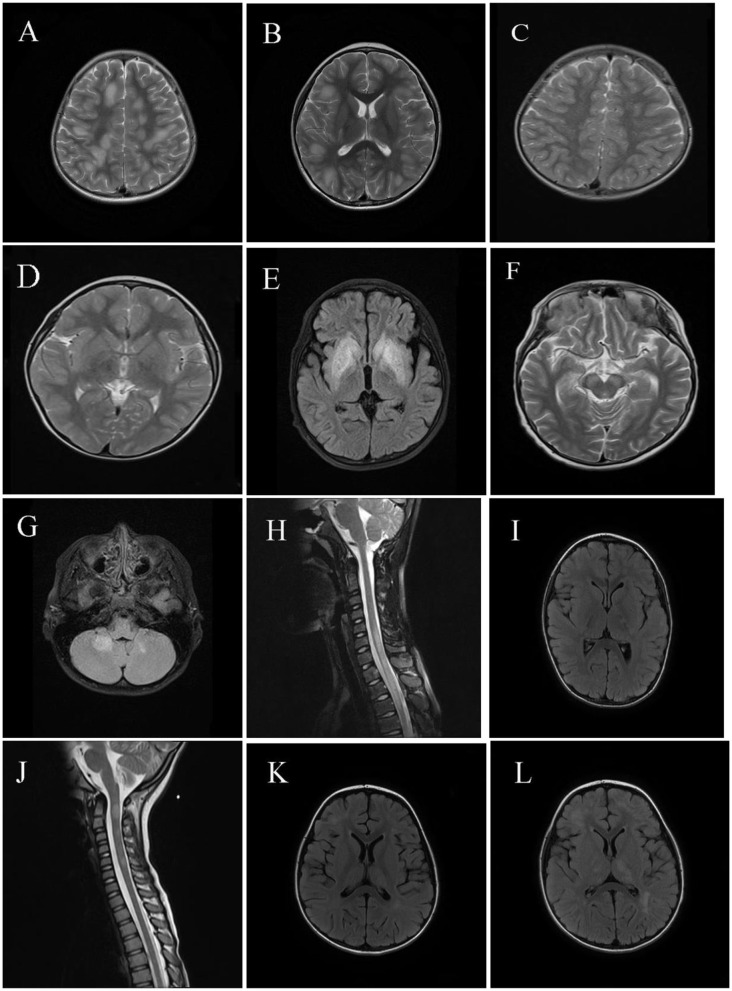Figure 3.
Magnetic resonance imaging (MRI) results of pediatric acute disseminating encephalomyelitis (ADEM) without anti-myelin oligodendrocyte glycoprotein antibodies (MOG-abs). (A–D) Cerebral MRI of a 3-year-old patient with ADEM but without MOG-abs who presented with frequent seizures and coma, revealed widespread, blurred, and large lesions involving supratentorial of both hemispheres and basal ganglia lesions [(A,B); axial-T2] similar to the typical cerebral MRI of patients with ADEM and MOG-abs. Six weeks later, a repeat cerebral MRI showed near-complete disappearance of the abnormal lesions of both supratentorial and basal ganglia [(C,D); axial-T2]. (E,F) Cerebral MRI of a 7-year-old patient with ADEM and lacking MOG-abs, who presented with fever and frequent seizures and had coma, revealed mainly large basal ganglia lesions [(E); axial-T2] and brainstem lesions [(F); axial-T2]; laboratory examinations were performed to exclude other possible diagnoses such as acute poisoning and metabolic encephalopathy; the patient progressively improved within 1 year after immunotherapy and achieved full recovery 1 year after immunotherapy. (G,H) Cerebral and spinal MRI of a 10-year-old patient with ADEM and lacking MOG-abs, who presented with headache, drowsiness, eye pain, fever, and visual dysfunction, showed large and blurred lesions of the cerebellum [(G); axial-T2], LETM of cervical and thoracic spinal cord [(H); sagittal-T2], and supratentorial lesions of the right hemisphere (not shown), and orbital MRI revealed a normal optic nerve (not shown). (I,J) Cerebral and spinal MRI of a 4-year-old patient with ADEM and lacking MOG-abs, who presented with fever, vomiting, urinary incontinence, and disturbance of consciousness, revealed small and blurred lesions of supratentorial, basal ganglia, corpus callosum lesions [(I); axial-T2] and circular or ovoid lesions of the cervical spinal cord [(J); sagittal-T2]. (K,L) Cerebral MRI of a 4-year-old patient with ADEM and lacking MOG-abs, who presented with fever, headache, vomiting, seizures, and disturbance in consciousness, revealed small and hazy lesions of supratentorial, thalamus/basal ganglia [(K); axial-T2]; 4 weeks later, lesions of the supratentorial and thalamus/basal ganglia enlarged even after immunotherapy, but the patient progressively achieved clinical improvement [(L); axial-T2].

